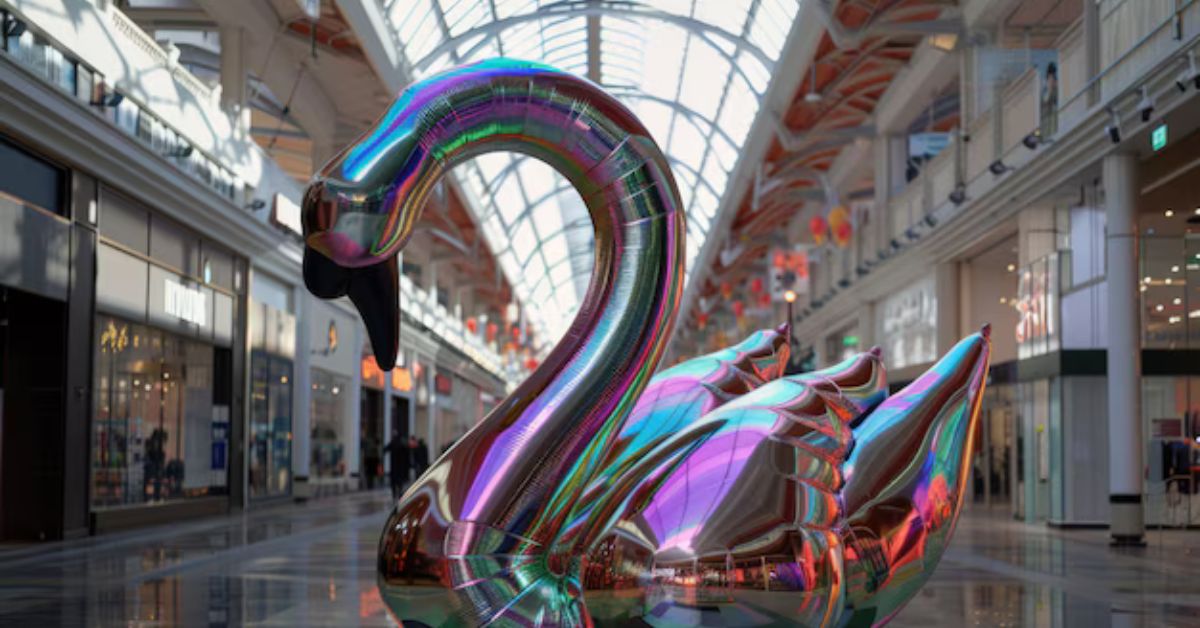General
What Are Arkistiques?

What Are Arkistiques is a term that has gained attention in the contemporary art world, blending art with kinetics to create unique, interactive, and dynamic art forms. It stands at the intersection of kinetic art, interactive media, and technology-driven art installations, emphasizing the relationship between art, the observer, and the environment. As this art form evolves, it is redefining the way people engage with art and inspiring new trends in the design and architecture of public spaces.
This article explores Arkistiques by delving into its origins, key characteristics, examples, and its impact on art and design.
What Are Arkistiques Origins
Arkistiques have their roots in kinetic art and interactive media installations, movements that began in the 20th century and sought to introduce movement and dynamism to art. Artists like Alexander Calder, with his kinetic sculptures, and László Moholy-Nagy, who experimented with light and motion, pioneered the idea of art in constant motion, moving away from static and fixed pieces. These works laid the foundation for the development of Arkistiques by showing that art could be more than a passive viewing experience.
With the rise of digital technologies and new media, the concept of interactive installations flourished. Artists began to explore how audiences could become part of the artwork itself, often through the use of sensors, projections, and responsive environments. This shift towards engagement, where viewers influence the artwork in real time, is what differentiates Arkistiques from traditional forms of art.
What are arkistiques Key Characteristics
Arkistiques are defined by several key characteristics, which distinguish them from other art forms. These elements contribute to the uniqueness of Arkistiques and their growing influence in contemporary art and design.
1. Dynamic Motion
At the heart of Arkistiques is movement, whether physical or virtual. The artwork is never static; it is in a state of constant flux, often responding to external stimuli or internal mechanisms. This movement can be mechanical, like rotating parts, or digital, such as shifting light patterns or video projections.
2. Interactivity
A fundamental element of Arkistiques is interactivity. The observer is not merely a spectator but an active participant who can influence the outcome of the artwork. This interaction can occur through physical touch, movement, sound, or even emotional responses. The artwork evolves in response to the user, creating a unique experience every time.
3. Integration of Technology
Arkistiques heavily rely on technology to create their dynamic and interactive elements. Technologies such as sensors, augmented reality (AR), virtual reality (VR), robotics, and computer algorithms play a crucial role in enabling the artworks to respond to external stimuli. This technology integration allows for real-time feedback, making the artwork a living entity that interacts with its environment and audience.
4. Focus on Experience
Rather than focusing on aesthetic beauty or narrative, Arkistiques prioritize the viewer’s experience. The goal is to create an immersive, engaging environment that challenges traditional concepts of what art is and how it should be consumed. Arkistiques aim to evoke emotional responses through interactive experiences, making the artwork memorable and unique to each viewer.
5. Environmental Interaction
Many Arkistiques are designed to engage with their surroundings in a meaningful way. They might respond to changes in light, temperature, or sound, creating an evolving relationship between the artwork, the environment, and the observer. This characteristic ensures that Arkistiques are not confined to galleries but can be found in public spaces, transforming how we interact with art in everyday life.
Examples of Arkistiques in Contemporary Art
Several contemporary artists have embraced Arkistiques, creating works that exemplify the key characteristics of this art form. Here are a few notable examples:
1. Rafael Lozano-Hemmer’s Interactive Installations
Rafael Lozano-Hemmer is known for creating large-scale interactive installations that incorporate technology and audience participation. His works often include biometric data, such as heartbeats or voices, to influence the artwork in real-time. One such piece, “Pulse Room,” allows participants to grip sensors that capture their heartbeats and translate them into light patterns that fill the room. The interaction between the participant and the artwork creates a personal connection that changes with every viewer.
2. Theo Jansen’s Kinetic Sculptures
Theo Jansen is an artist famous for his Strandbeests, large kinetic sculptures that resemble mechanical animals and move using wind power. These creatures, made from lightweight materials, walk across beaches as if they were living beings. Jansen’s work embodies the essence of Arkistiques by combining art, engineering, and natural forces to create something both alive and interactive.
3. teamLab’s Digital Art Installations
The digital art collective teamLab creates immersive environments that respond to the movements and interactions of visitors. Their installations, such as “Borderless” in Tokyo, consist of shifting digital projections that change based on where and how viewers move. teamLab’s art is a perfect example of how Arkistiques can transform space into a dynamic, responsive environment that blurs the boundaries between art, audience, and environment.
4. Augmented Reality (AR) and Virtual Reality (VR) Art
Arkistiques are also making their mark in the digital realm through AR and VR technologies. Artists are using these mediums to create environments that users can explore and manipulate in real-time. These digital spaces can evolve based on user input, further blurring the line between creator and viewer.
Impact of Arkistiques on Art and Design
Arkistiques are transforming the way art is experienced and appreciated. Their impact reaches beyond galleries and museums, influencing fields such as architecture, public space design, and even product design.
1. Transformation of Museum and Gallery Experiences
Arkistiques have redefined the traditional museum experience, encouraging visitors to engage with art in new ways. Museums are increasingly embracing interactive installations that challenge the passive viewing model, making art more accessible and engaging. This shift has also made museums more appealing to younger audiences and people who may not typically engage with fine art.
2. Influence on Architecture and Public Spaces
Arkistiques have also made their way into public spaces, creating dynamic environments that interact with the natural and built world. Architects and urban planners are incorporating these interactive elements into building designs, making spaces that respond to light, sound, and movement. This fusion of art and architecture enhances the functionality and aesthetic appeal of public spaces.
3. Stimulating Creativity in Design
In addition to art and architecture, Arkistiques are influencing product design and innovation. Designers are inspired by the concept of interactive, dynamic objects that engage users in new ways. This trend is evident in smart devices, furniture, and even fashion, where interactivity and motion are used to enhance the user experience.
The Future of Arkistiques
As technology continues to evolve, the potential for Arkistiques to push the boundaries of art and design is limitless. With advancements in AI, robotics, and immersive technologies, future Arkistiques may become even more interactive and integrated into our daily lives. These art forms will continue to challenge traditional notions of art, prompting further innovations in both artistic expression and design.
FAQs
1. What are Arkistiques?
Arkistiques is an art form that blends kinetic art and interactive media installations, focusing on live interaction, dynamic motion, and audience engagement.
2. What technologies are used in Arkistiques?
Arkistiques often utilize technologies such as sensors, robotics, augmented reality (AR), virtual reality (VR), and computer algorithms to create interactive, dynamic art pieces.
3. How do Arkistiques differ from traditional art forms?
Unlike traditional art forms that are static, Arkistiques are dynamic and interactive, allowing viewers to influence and interact with the artwork in real time.
4. What are some examples of Arkistiques in contemporary art?
Notable examples include Rafael Lozano-Hemmer’s interactive installations, Theo Jansen’s kinetic sculptures, and teamLab’s immersive digital environments.
5. What is the future of Arkistiques?
As technology advances, Arkistiques will continue to evolve, incorporating new innovations such as AI and robotics, and further blurring the line between art and audience interaction.
-

 Entertainment6 months ago
Entertainment6 months agoBaddieHub: Transforming the Landscape of Digital Empowerment
-

 Health & Fitness4 months ago
Health & Fitness4 months agoThe //vital-mag.net blog The Complete Resource for Health
-

 Review8 months ago
Review8 months agoεμφανιση σβισμενον φωτογραφιων: Restoring Deleted Photos Made Easy
-

 Review7 months ago
Review7 months agoGet in Touch with TurboGeekOrg: Maximizing Your Experience on the Ultimate Tech Platform














